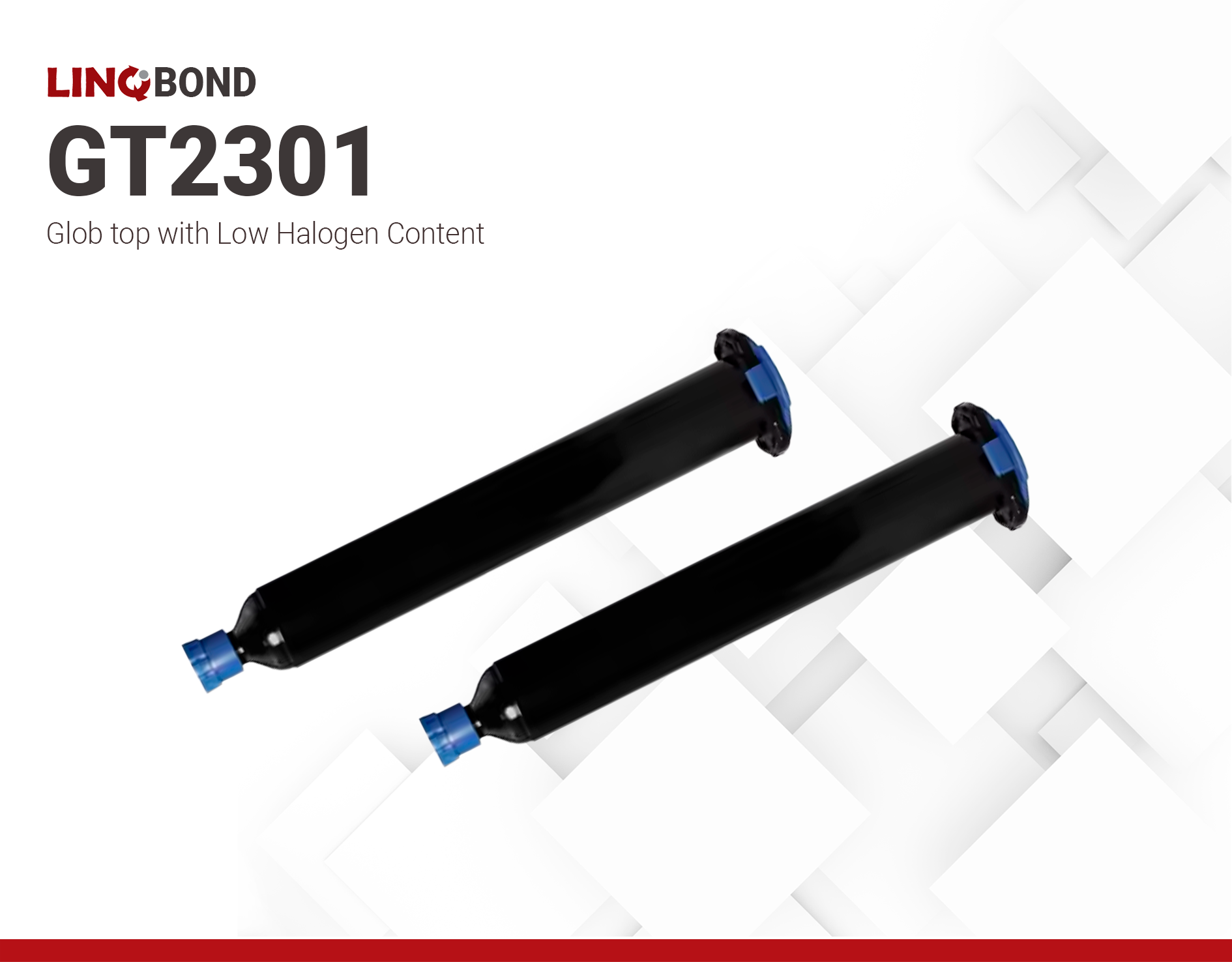LINQBOND GT2301 | Glob Top
Technical Specifications
| General Properties | |||||||
| Pot Life Pot Life Pot life is the amount of time it takes for the viscosity of a material to double (or quadruple for lower viscosity materials) in room temperature after a material is mixed. It is closely related to work life but it is not application dependent, less precise and more of a general indication of how fast a system is going to cure. | 7 hours | ||||||
| Specific Gravity Specific Gravity Specific gravity (SG) is the ratio of the density of a substance to the density of a reference substance; equivalently, it is the ratio of the mass of a substance to the mass of a reference substance for the same given volume. For liquids, the reference substance is almost always water (1), while for gases, it is air (1.18) at room temperature. Specific gravity is unitless. | 1.48 | ||||||
| Physical Properties | |||||||
| Viscosity Viscosity Viscosity is a measurement of a fluid’s resistance to flow. Viscosity is commonly measured in centiPoise (cP). One cP is defined as the viscosity of water and all other viscosities are derived from this base. MPa is another common unit with a 1:1 conversion to cP. A product like honey would have a much higher viscosity -around 10,000 cPs- compared to water. As a result, honey would flow much slower out of a tipped glass than water would. The viscosity of a material can be decreased with an increase in temperature in order to better suit an application | 45000-85000 mPa.s | ||||||
| Chemical Properties | |||||||
| Water Absorption | 0.58 % | ||||||
| Electrical Properties | |||||||
| |||||||
| Surface Resistivity | 4.5E14 Ohms/sq | ||||||
| Volume Resistivity Volume Resistivity Volume resistivity, also called volume resistance, bulk resistance or bulk resistivity is a thickness dependent measurement of the resistivity of a material perpendicular to the plane of the surface. | 4.5x1015 Ohms⋅cm | ||||||
| Mechanical Properties | |||||||
| |||||||
| Thermal Properties | |||||||
| |||||||
| Glass Transition Temperature (Tg) Glass Transition Temperature (Tg) The glass transition temperature for organic adhesives is a temperature region where the polymers change from glassy and brittle to soft and rubbery. Increasing the temperature further continues the softening process as the viscosity drops too. Temperatures between the glass transition temperature and below the decomposition point of the adhesive are the best region for bonding. The glass-transition temperature Tg of a material characterizes the range of temperatures over which this glass transition occurs. | 130 °C | ||||||
Additional Information
Instructions for Use:
Before use, thaw the product to reach room temperature for 1–2 hours. Syringe should be placed vertically while thawing. Keep container airtight until room temperature is reached.
Ensure the surface to be bonded is clean and free of contaminants like dirt, grease, or mold release agents. A simple solvent wipe is often sufficient.
Cure time may vary based on the actual part geometry, material volume, and equipment. It is recommended to test on actual parts and equipment.
For large-scale applications, consider a staged curing process: start with a lower temperature precure, followed by a full cure at a higher temperature to effectively manage heat release.
The epoxy cannot be refrozen once exposed to room temperature.
Storage and Handling
Store and transport at a -5°C temperature. Keep away from moisture and heat sources. It is strictly forbidden to store in outdoor environments. Lower temperatures will ensure better flow and nullify any chance of cross-linking.
Shelf life at -5°C is 365 days.



